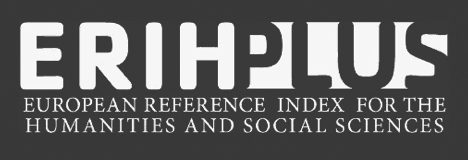Estudio de la alfarería del sitio Calera (partido de Olavarría, provincia de Buenos Aires, Argentina) desde la perspectiva del estilo tecnológico
Keywords:
Pottery, Technological Style, Ritual Site, Pampean Region, Late Holocene,Abstract
Calera was interpreted as an archaeological ritual site, constituted by the intentional burial of diverse kinds of material remains, which played different roles in the ceremonies and/or feasts that took place in the surrounding area, during diachronic events, in the Late Holocene. Pottery record found in Calera share some characteristics with others from the Pampean region, but also some of its features are exceptional, such as its deposition context, associated remains and the depiction of an anthropomorphic figure on one of the vessels. The characterization of ceramic technological style, based on macroscopic and microscopic analysis, allowed to infer the technological choices made on different stages of the manufacturing process (e.g., selection of different provisioning sources or raw materials mixtures, intentional addition of grog, different techniques of colored layer application, execution of a variety of decorative representations) and to explore the possible determining constraints (e.g., environmental, functional, symbolical) that underlying on each one of them. On the basis of partial reconstruction of some vessels, observation of morphological and dimensional attributes, presence of decorative representations and use-alterations, it is proposed that some of them were used to cook food on fire, while others were used to serve food or beverages. Calera's pottery was not only used for cooking and serving, possibly in the context of ceremonies or feasts, but its intentional burial, in association with various types of remains, would have had a symbolic and aesthetic sense.Downloads
Published
Issue
Section
License
La publicación en la RMLP se realiza bajo los términos de la licencia de uso y distribución Creative Commons BY-NC-SA 4.0 para Argentina (https://creativecommons.org/licenses/by-nc-sa/4.0/) que permite a terceros la distribución, la copia y la exhibición del artículo siempre que citen la autoría del trabajo, la publicación en la RMLP, número concreto y las páginas en la que encontraron la información. No se puede obtener ningún beneficio comercial y no se pueden realizar obras derivadas con fines comerciales que no autorice la editorial. Si se remezcla, transforma o construye sobre el material, deben distribuir sus contribuciones bajo la misma licencia que el original.
La puesta a disposición del artículo en la RMLP supone para los autores argentinos el cumplimiento de lo establecido en la Ley 26899 de Creación de Repositorios Digitales Institucionales de Acceso Abierto, Propios o Compartidos, del 13/11/2013 en su artículo 5º, en lo relativo a la obligatoriedad de facilitar en acceso abierto los resultados de investigaciones financiadas por agencias gubernamentales y de organismos nacionales de ciencia y tecnología del Sistema Nacional de Ciencia, Tecnología e Innovación.










